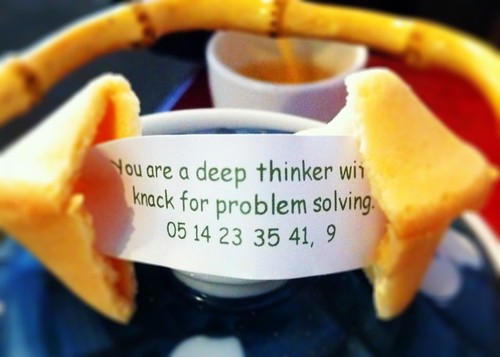 |
| Photo by Tomasz Stasiuk on Flickr |
In project-based, the students are working on a project with a product as the result of their work. In problem-based, the students are solving a real-world problem and produce a product to show their solution. While both approaches involve students working on developing some type of product, the problem-based task is focused more on the problem solving process and less on the product. As stated on the EduTech wiki:
"Project-based learning typically begins with an end product or "artifact" in mind, the production of which requires specific content knowledge or skills and typically raises one or more problems which students must solve. Projects vary widely in scope and time frame, and end products vary widely in level of technology used and sophistication. Problem-based learning, as the name implies, begins with a problem for students to solve or learn more about. Often these problems are framed in a scenario or case study format. Problems are designed to be "ill-structured" and to imitate the complexity of real life cases."
I find that problem-based tasks are also more rigorous and often involve higher level thinking skills. If the problem task is well-defined and "ill-structured", students need to work collaboratively with other students as well as experts to figure out the best solution for the problem.
Designing the problem-based learning task scenario is often to most difficult part of the unit design. You must begin with the end in mind, determining what you want the students to learn. Then you must figure out what real-life scenarios would lend itself to this learning. That is often tough to do. You might want to contact your local Chamber of Commerce to see if they have a list of experts who are willing to help teachers come up with real-life problems related to the content they are teaching.
In problem based learning, there is a process the students' use to solve the problem. The Illinois Math and Science Academy has defined the process as shown in this image:
There are also other problem solving models such as the Big6 Research Model and the 4D's. While the Big6 process works well for initial teaching of researching information to solve a problem, it seems that middle and high school students would best benefit from using either the IMSA model or the 4D's model. It focuses more on the problem solution rather than specifically information research. While information research is necessary when solving problems, these two models seem to work better for older students who have information research skills already.
Our district did a lot of work on problem based learning several years ago. We did a comparison of Big6, Super3 (Big6 for primary students) and 4D's. While these all will work to some extent, I really like the IMSA model for upper elementary through high school. It seems to give enough guidance through the process without feeling to rigid. I am teaching a graduate course this spring which is a one-credit introduction to problem-based learning. As I prepare for this course, I will add blog posts with resources I find. I would also like to know what questions teachers have about problem-based learning. Please share in the comments below or by emailing me.


No comments:
Post a Comment